The Buckeye chicken is an American breed that is known for its friendly and gentle personality, as well as its egg-laying capabilities. The Buckeye has a long history in the United States that dates back to the turn of the 20th century. It remains popular among hobby farmers, backyard chicken keepers, and enthusiasts.
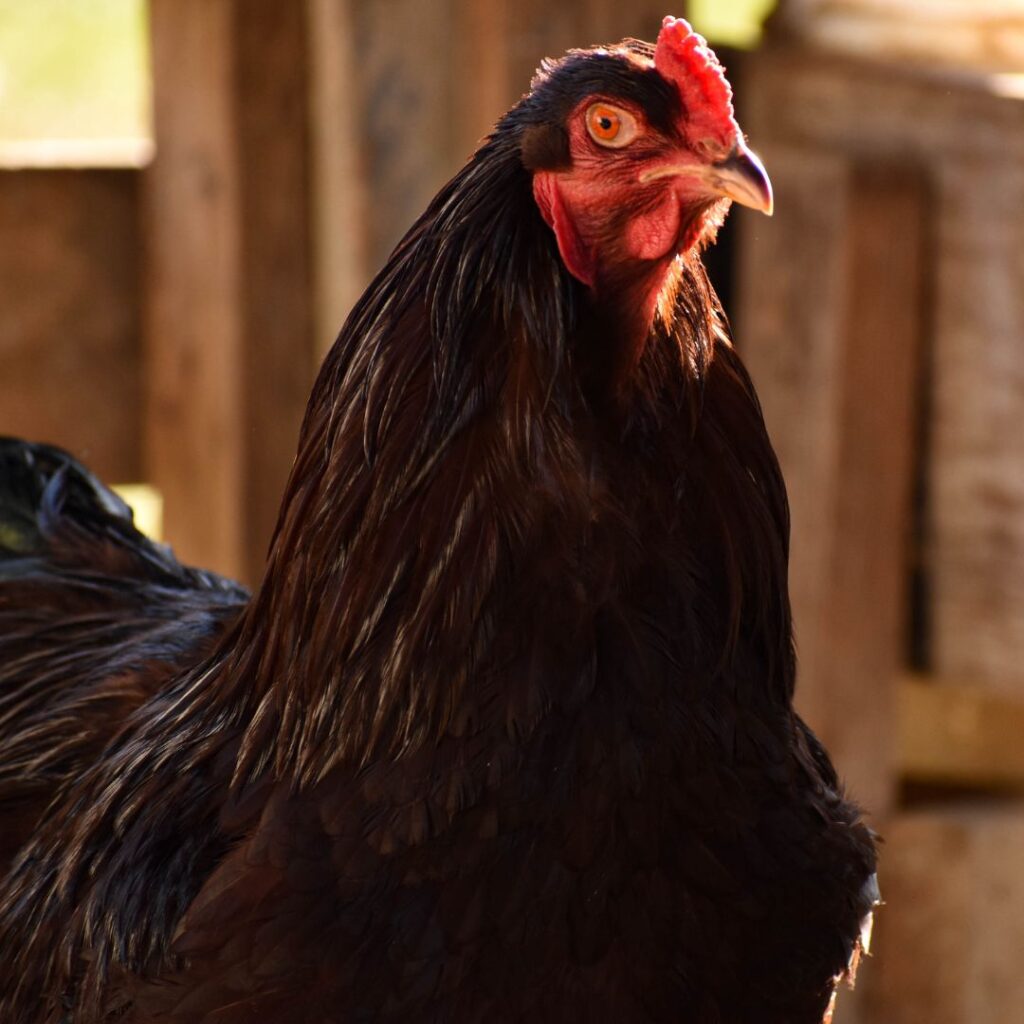
History and Background of The Buckeye Chickens
Mrs. Nettie Metcalf developed the Buckeye chicken from Warren County, Ohio, in 1896. She crossed Barred Plymouth Rocks with Buff Cochin hens to create this distinctive breed, named after her home state. This is the only breed developed and created by a woman.
Fun Fact: Ohio is nicknamed the Buckeye State for its famous buckeye nut.
They were first introduced at the Ohio Poultry show (Cleveland, Ohio) in 1902 as Buckeyes, thus the birth of the breed.
Fun Fact: Before the Ohio Poultry Show, Nettie Metcalf called her new breed Pea Combed Rhode Island Reds.
The breed was first recognized by the American Poultry Association in 1904 and quickly gained popularity across America due to its dual-purpose characteristics (laying eggs and producing meat).
Established in 1906, the American Buckeye Club (ABC) was founded to give poultry enthusiasts a place for discussion and education about all varieties of birds known as “RED’S” at that time. The ABC was formed from Nettie Metcalf’s National Red Feather Club, which sought to unite people over their shared love of poultry.
As one of the oldest, most respected associations, ABC proudly pledged its support to the American Poultry Association (APA) on January 18th, 1906. It continues to be an active member with valuable contributions to poultry research and development.
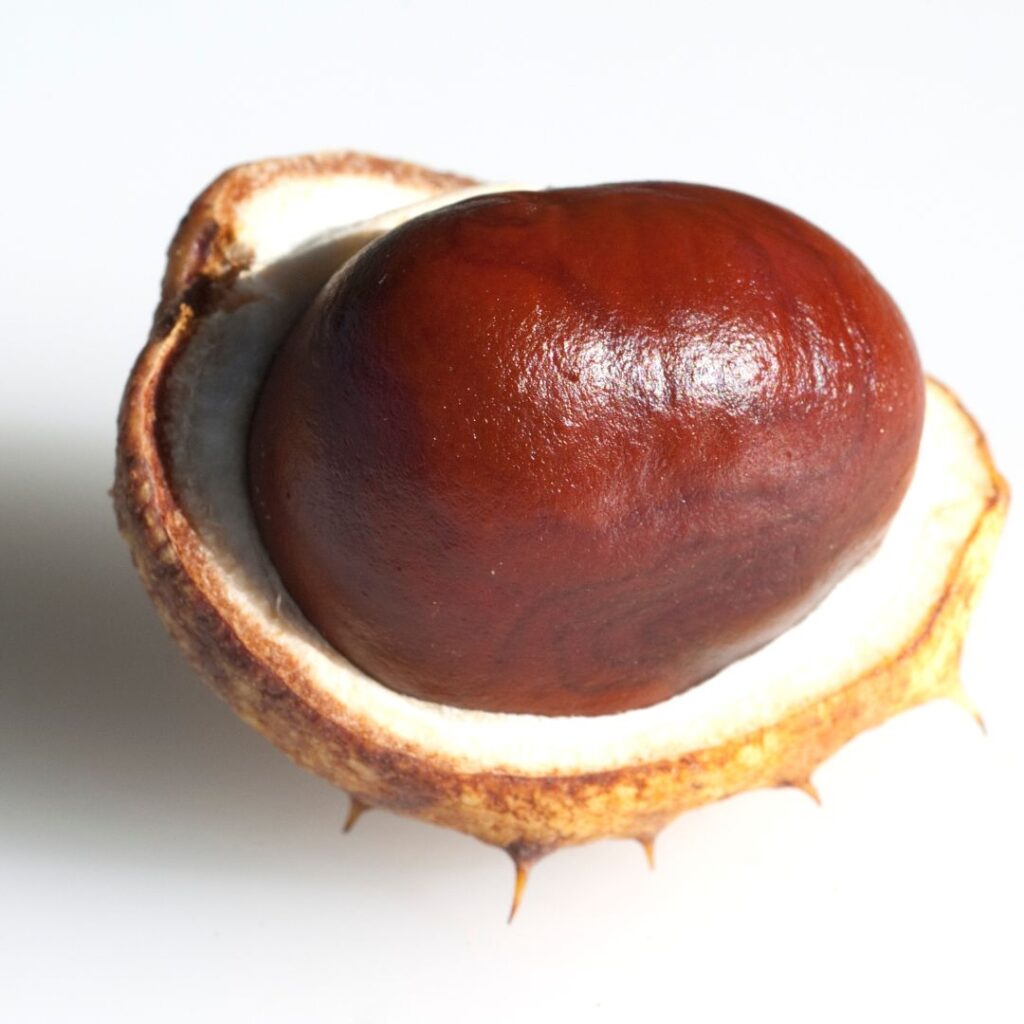
All American Livestock Breeds Conservancy (ALBC)
The American Livestock Breeds Conservancy (ALBC) began an initiative in 2005 to return the Buckeye to a productive backyard breed. This remarkable effort has brought the population of Buckeyes from near extinction to now exceeding 5,000 birds.
Organizations like the Society for Preservation of Poultry Antiquities (SPPA) and the American Livestock Breeds Conservancy (ALBC) have recognized their value. They are actively working to conserve and maintain this threatened breed.
The American Buckeye Poultry Club (ABPC) was started a few years later, in 2008, by Mrs. Haggarty. This club’s primary goal is to focus on breeding the Buckeye chicken to standards set by the APA and the ABA and maintain its heritage breed qualities.
However, their success still needs to be assured as it is listed as a ‘Threatened’ breed under the Livestock Conservancy list and needs dedicated friends if it is to continue to thrive.
The Livestock Conservancy and the American Buckeye Poultry Club (ABPC) are nonprofit organizations.
Appearance and Breed Standard Of the Buckeye Breed
Buckeyes are medium-sized chickens with a single comb and white earlobes. They have distinctive red wattles and combs that contrast nicely with their black feathers and bright yellow legs.
The Buckeye rooster is known for being much larger and heavier than hens, weighing in at an average of around 9 lbs. The Buckeye hen, in comparison, weighs only 6 1/2 lbs.
Part of the unique charm of the Buckeye breed is its body shape. Buckeyes have a short, broad back that is angled/slanted. They boast heavy, meaty thighs and mighty wings alongside their breasts, resembling the Cornish breed. Although its developer, Mrs. Metcalf, indicated she did not use any Cornish breeds to create the Buckeye breed. However, she did acknowledge that the Cornish body shape was what she was aiming for.
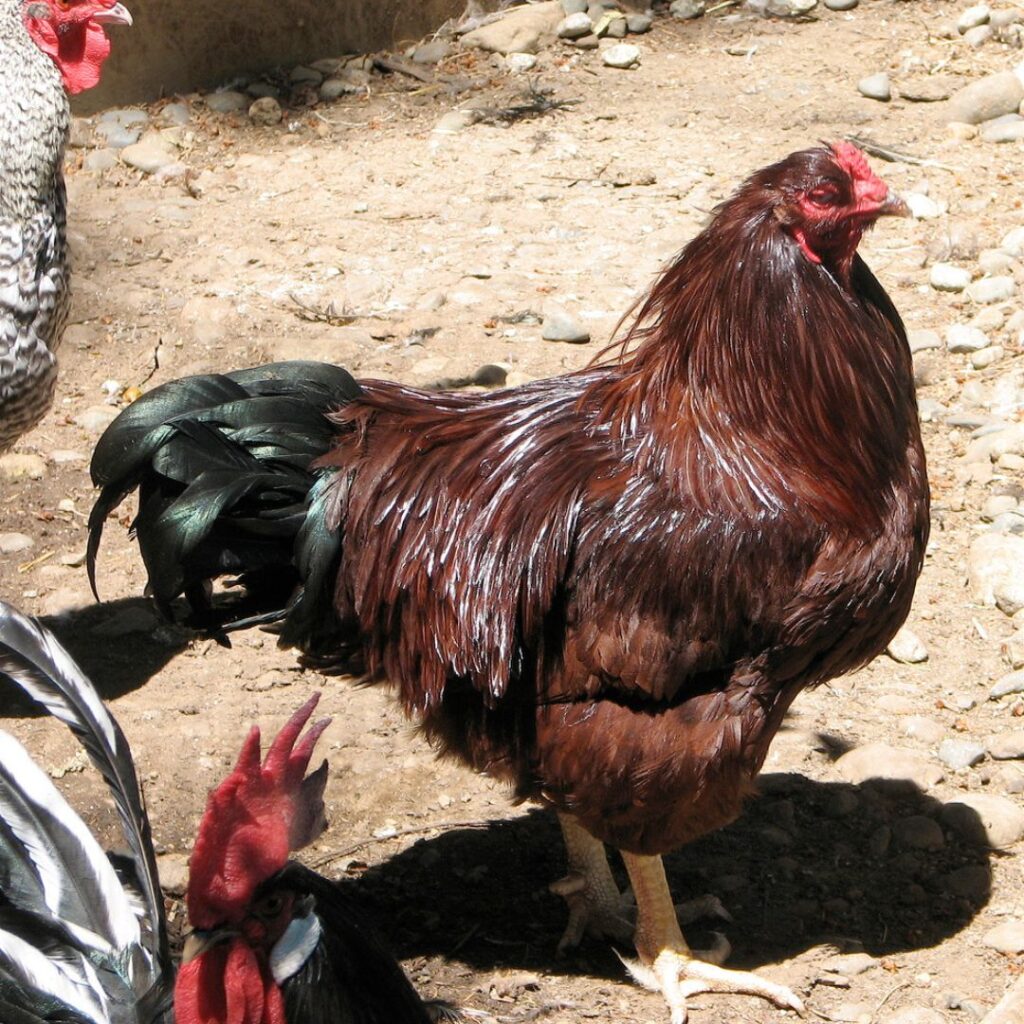
Rhode Island Reds vs. Buckeye Chickens
In color, the Buckeye is also unique. The color of the Buckeye is darker than that of the original Rhode Island Red (later, the Rhode Island Red was bred for a shade of color even darker than the Buckeye). The Buckeye also has a slate-colored bar in the under color (fluff) of its back; the Rhode Island Red’s feathers should be red to the skin.
Both breeds share the trait of tight feathering, unique in the American Class of poultry.
This hardy breed has yellow skin, clean legs, and beaks that are yellow with a reddish horn coloring, red faces, wattles, and eyes are a reddish bay color. This type of fowl is also exceptionally cold-hardy due to its bright red pea comb.
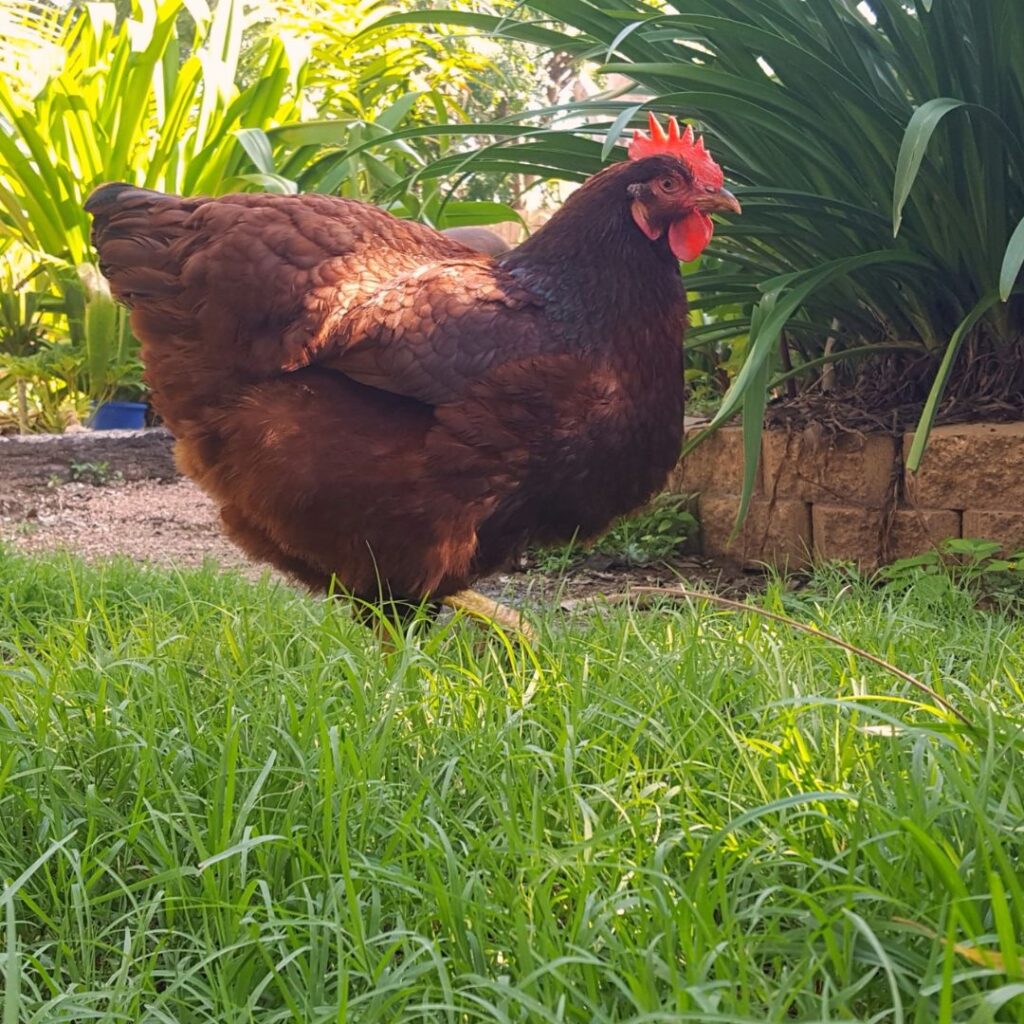
What do Buckeye chicks look like?
Buckeye chicks are adorable little bundles of fluff. They have an eye-catching coloration that varies in shades of rusty red, light browns-tan, and shades of yellow. The legs on the chicks are bare without any feathers and yellowish, and their beaks are yellowish brown.
The Buckeye Bantam Breed
The American Poultry Association recognizes the Buckeye Bantam breed; however, there needs to be more information to accurately describe this bantam breed standard. We suspect this is a miniature of the standard breed with a similar physical appearance to the standard-sized Buckeye chickens.
As with any bantams, they will lay much smaller eggs than their ‘larger’ counterpart.
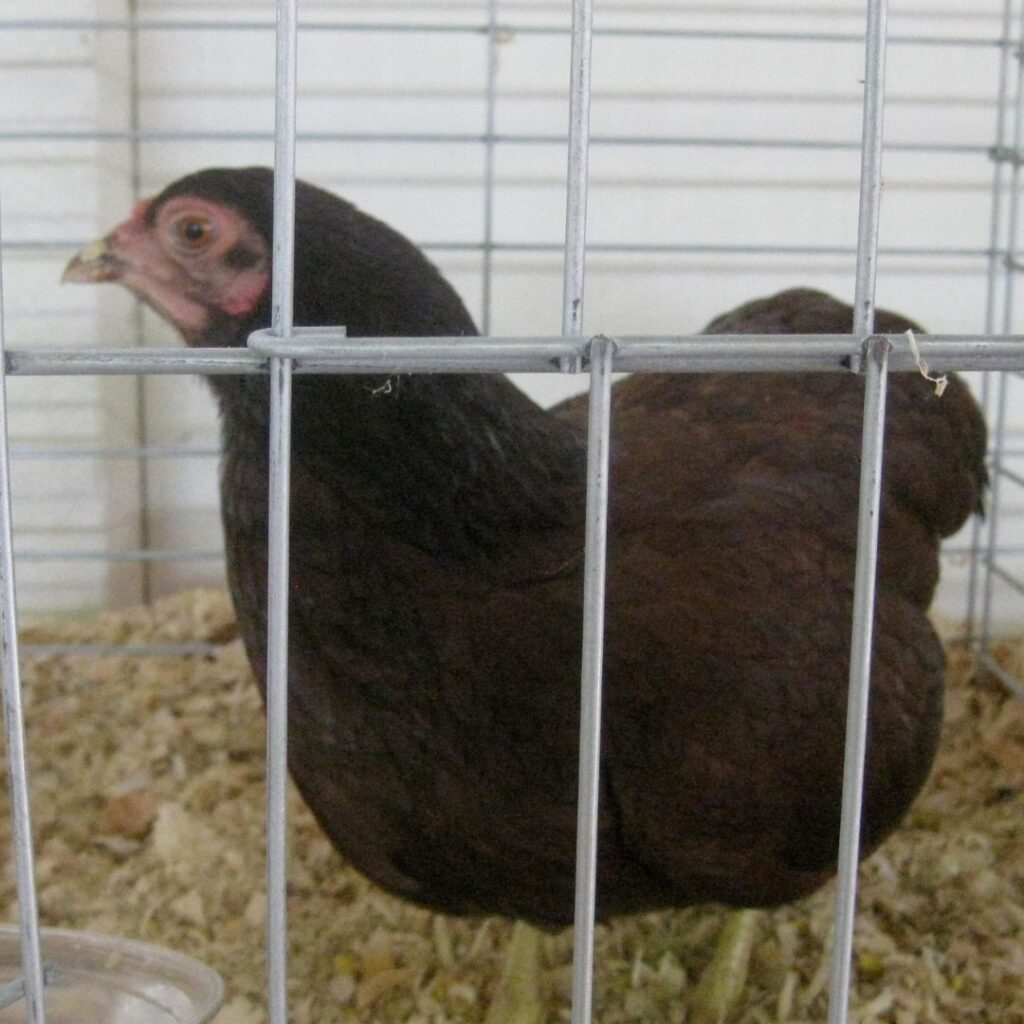
The personality of the Buckeye chicken
They are very docile birds with sweet dispositions and make great family pets. The Buckeye chickens are curious and very active fowl, which serves them well when foraging for food and keeping your yard with fewer bugs like grubs and ticks.
Do Buckeye chickens Get Along With Other Chickens?
Buckeye chickens are an amiable breed. They coexist peacefully with other breeds and generally get along well with one another.
Roosters pay close attention to the flock, looking after its well-being in an unassuming fashion. Little fighting between males is reported as long as their flock size is proportioned. A general rule of thumb is to have at least ten hens per 1 rooster.
The Buckeye chickens’ tolerance of one another creates a relaxed and calm atmosphere for all birds, allowing for pleasant living conditions for all the chickens in the flock.
Are Buckeye Roosters Aggressive?
Buckeye roosters are a stunning and productive addition to any homestead. They tend to be easygoing while remaining watchful of their ladies. Buckeye roosters will respect the space of other roosters in medium to large flocks (the same can’t be said of the other breeds, though).
But don’t let their easygoing beauty deceive you – these birds can become quite aggressive during the breeding season.
It is a trait from their game bird ancestors and is mainly directed at other flock mates rather than humans. However, it is not unheard of for this ferocity to come up to us as well.
It may be startling at first, but this shows that they are trying to protect the flock and maintain order within the pecking hierarchy.
Are Buckeye Chickens Noisy?
The Buckeye might not be a good fit if you’re looking for a breed of chicken to keep in your urban space. They tend to be on the loud side compared to other hens and roosters, though these chickens don’t have a basic “cluck” for their vocalizations.
Instead, you’ll be surprised by the range of chicken songs from the Buckeye. From gentle chirps to aggressive squawks – these birds are full of personality and sure to liven up your homestead with various vocalizations.
While the louder squawks can be less appealing to the human ear, it is a great deterrent for some predators.
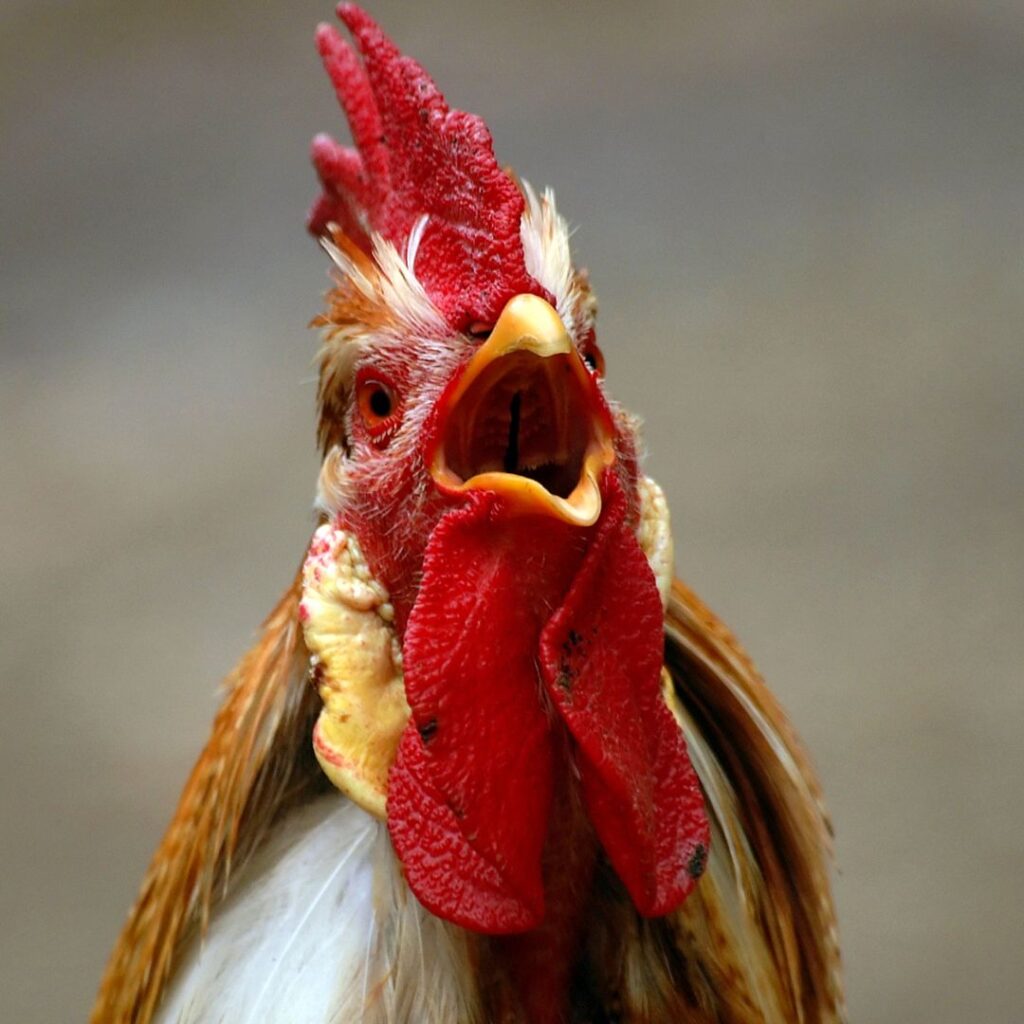
Is The Buckeye A Dual Purpose Chicken?
The Buckeye is a dual-purpose chicken that provides a family farmer with plenty of reliable nutrition. They are hardy and steady brown egg layers.
For meat producers, they make wonderful dual-purpose birds, their broad bodies and heavy meaty thighs filling dinner plates with flavorful and juicy poultry.
Are Buckeye Hens Good For Egg Production?
The Buckeye hen is a pretty reliable layer of eggs. A single Buckeye hen can produce anywhere from 3 to 4 medium brown eggs per week with a yearly output ranging from 150-200 eggs. More impressive, these poultry are known to still lay well even in the cold winter months.
Current-day Buckeye hens have been selectively bred for improved egg production, an attribute which can bring up their yearly output to between 175-240 brown eggs and 4-5 eggs weekly.
How Long Is Egg Production Of Buckeye Hens?
A Buckeye hen can start laying eggs much later than most breeds. These ladies are known to be slow at maturing, and some laying as late as 7-9 months. This would be an ideal breed to start at chicks in the early fall. They’ll kick off spring laying healthy and well-developed.
Once these young ladies start laying they will continue year-round (less in winter) until they are 4-5 years old, some as old as 6.
The average life expectancy of these chickens is 7-10 years.
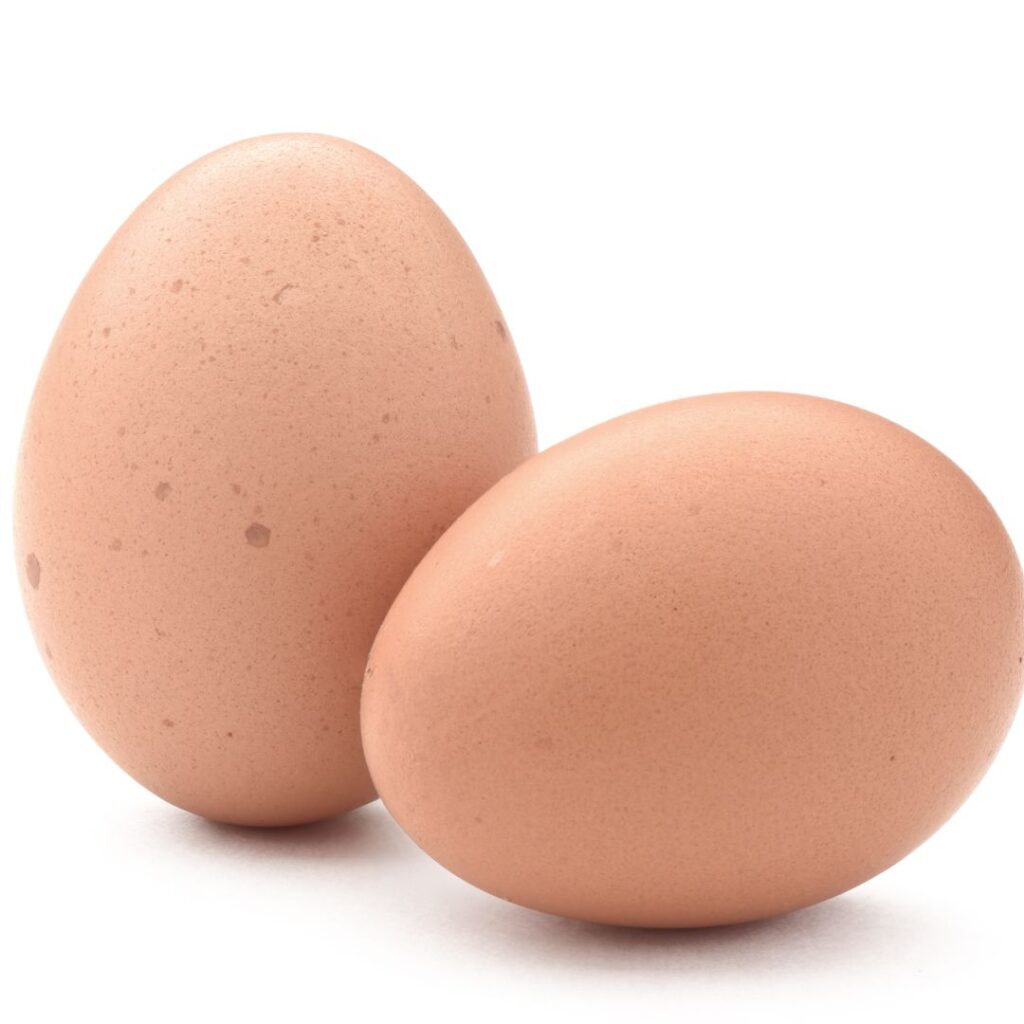
Are Buckeye hens broody?
Raising a small flock of Buckeye hens can be an enjoyable experience. The Buckeye hens are great for those looking for a sustainable flock.
These hens tend to show a lot of motherly instinct and are known to go broody, meaning they’ll sit on, incubate and care for hatching eggs.
Although the hens make wonderful mothers, the Buckeye roosters can get aggressive during the breeding season, so it’s essential to keep a careful eye on them.
Is The Buckeye Chicken Breed Cold Hardy?
They are pretty hardy birds that can tolerate both hot summers and cold winters, making them well-suited for many climates across the U.S.
Buckeye chickens are among the few breeds with such impressive cold hardiness. They boast small pea combs that fit closely to the head, which helps them stay protected from frostbite. Not only do they have these helpful physical characteristics, but their wattles are much smaller than most other chicken breeds, making them even more resistant to colder temperatures.
However, the rooster will require extra care by placing a dab of petroleum jelly on their combs and wattles during cold winters.
In fact, when compared to Rhode Island Red or Plymouth Barred Rock, the Buckeye chicken show a greater hardiness and resistance to frostbite due to its physical characteristics. Read more about the Rhode Island Red, Plymouth Barred Rock and other cold hardy breeds for your flock.
Fun Fact: The Buckeye chicken is the only American breed that has a pea comb.

Caring For A Buckeye Flock
Buckeyes need higher protein feed than other poultry breeds. Begin baby Buckeye chicks with a turkey starter that contains 30% protein for the first eight weeks. (medicated or non-medicated)
At week eight, transition to a game bird starter feed containing high protein levels. (non-medicated)
Buckeyes want their protein from animal protein. In an emergency, in small amounts, and for a short time, you can use dry cat food.
Note: Turkey starter, Game bird starter, feathers, and cat food all contain animal protein.
Chicken coop
Space
For each bird, it is essential to provide at least 8-10 square feet of space. This should contain nesting areas and roosting spaces, feeders, and waterers.
Roosts
To ensure your chickens are content and healthy, provide them with 12 inches of roosting space per bird. This is their designated spot for restful sleep and winter napping. While the cold weather may bring about a sense of closeness as they huddle up for warmth, in the summertime, you can expect these birds to spread out once again.
Nesting boxes
A 12″ square nesting box is ideal for housing egg-laying hens and hatching eggs. A 1:4 ratio should be maintained; in other words, one nest per every four chickens. Ensure these areas are clean and include additional bedding to protect those tasty eggs.
Feeders and Waterers
Keep feed and water containers clean and fresh. It’s best to lift them off the ground about 4-6″ to keep their litter from getting pushed around into the water or feeder.
In the winter, change the water often/ 32degrees and below will freeze the water. An alternative is to invest in a heated waterer.
Put ice cubes in the water in the summer heat to keep the water cool and fresh.
The Chicken Run
Outdoor Run Space
To encourage and maintain the well-being and harmony of each bird in your flock, a minimum of 15 square feet should be given for Buckeye chickens for them outdoors.
While a Buckeye chicken may adapt to confinement, it will need a large enough area to accomplish this adjustment.
Fencing height
While a six-foot fence may keep the chickens in, it will not do anything to keep predators out. Provide a six-foot-high secure fence to protect your flock, and consider adding a hardware cloth, screening, or other covering to prevent hawks and other predators from gaining entry.
Dust Bath
Give your feathered friends the luxury of a dust bath to keep their mahogany feathers lustrous and healthy while eliminating pesky mites and lice.
Dust bathing is a great way for chickens to relax and refresh on hot days and can also be beneficial for any bird.
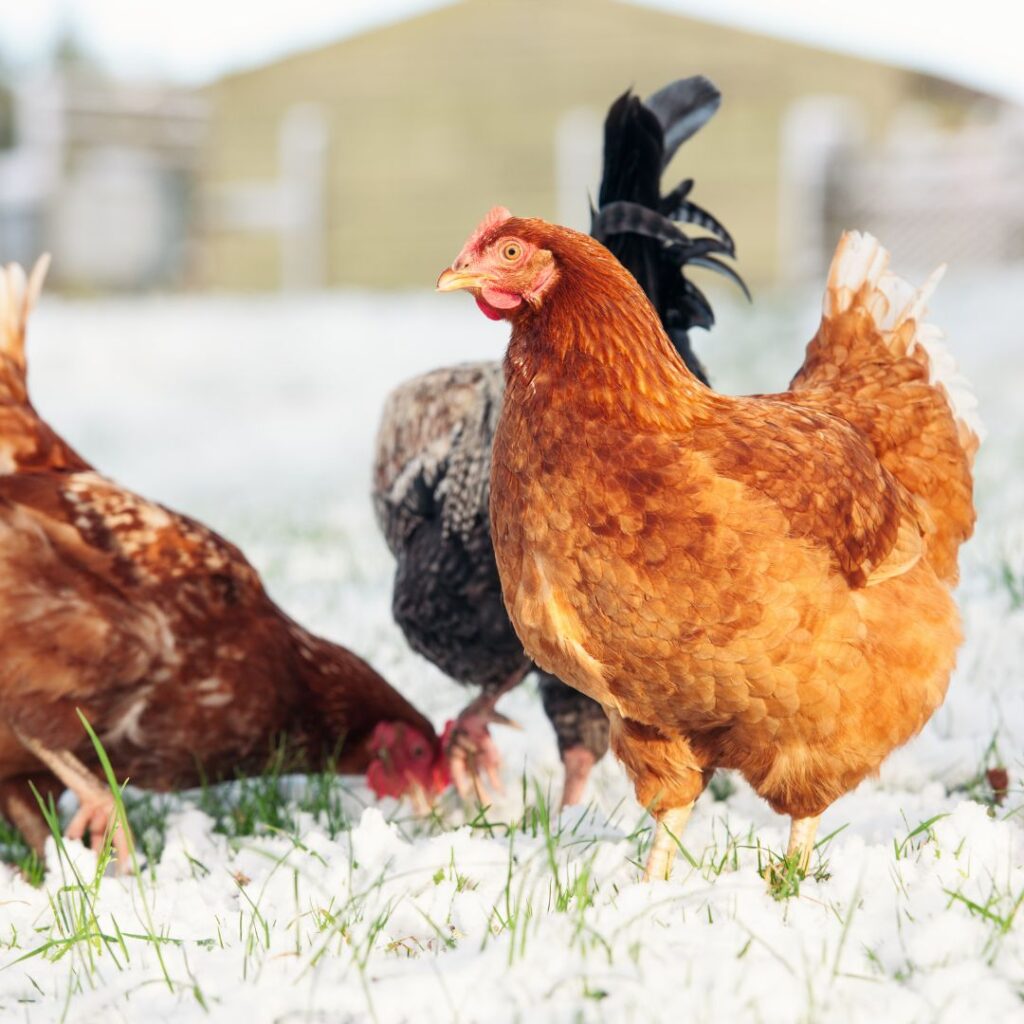
Is The All American Buckeye Breed Good For Free Range Flocks?
The Buckeye breed is a great choice when it comes to free-range flocks. You won’t ever hear anyone calling them a lazy fowl. Their active nature means they will happily scavenge for food and even hunt mice, snakes, and other small critters (thanks to their game bird genes).
This is a significant benefit as it can reduce your need to supplement their diets. They are also efficient foragers and can locate more of their food than many other chicken breeds.
That being said, Buckeyes do not do well in confinement, so make sure your flock has plenty of room to roam if you choose this breed. The All-American Buckeye could be an excellent addition to any flock with the proper setup and care.
Are Buckeye Hens Good For Urban Homesteads?
Buckeyes are best left to areas with more land and space between neighbors. The loud, almost dinosaur-like roar can annoy some neighbors, leading to complaints about your flock.
They also are such a strong forager that the only way to contain them happily requires more space and creativity (natural perches, changing out grass clippings, leaves, etc.), which can be more challenging in an urban setting.
There are many other quieter chicken breeds out there that can provide well to an urban homestead.
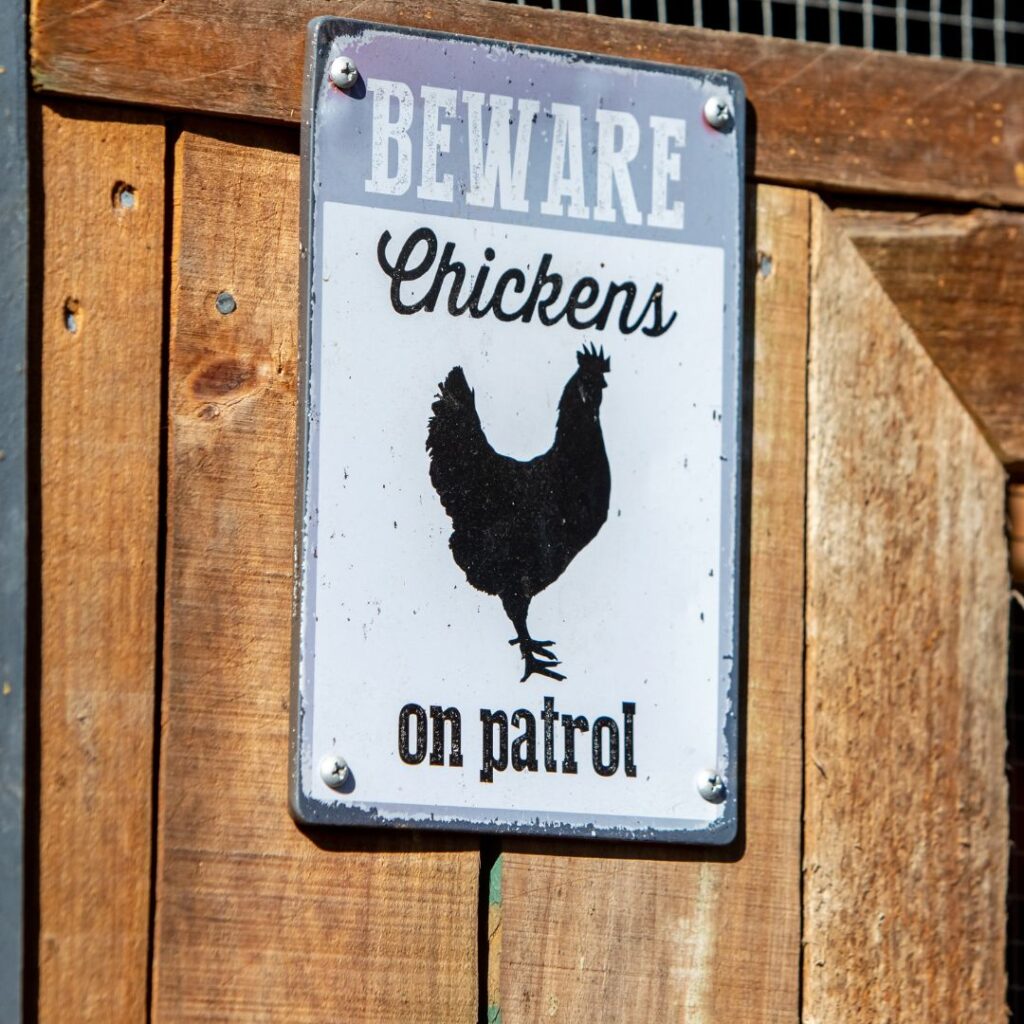
Are Buckeye Chicken Breeds Good Backyard Flocks For Hobby Farmers and Homesteaders?
This chicken breed is steeped in Buckeye chicken history, from its developer to the organizations that keep the breed alive and thriving today.
The Buckeye chicken is ideal for a dual-purpose bird with plenty of personality. This classic American breed is known for its gentle nature and consistent egg-laying capabilities; it produces excellent quality meat.
These hardy birds can tolerate most climates, so no matter where you live, you can add some Buckeyes to your flock.
Their resilience, personality, and ease of care make them ideal for both experienced and new chicken keepers/ flock owners. There’s little left to want from this only chicken breed developed by a woman.


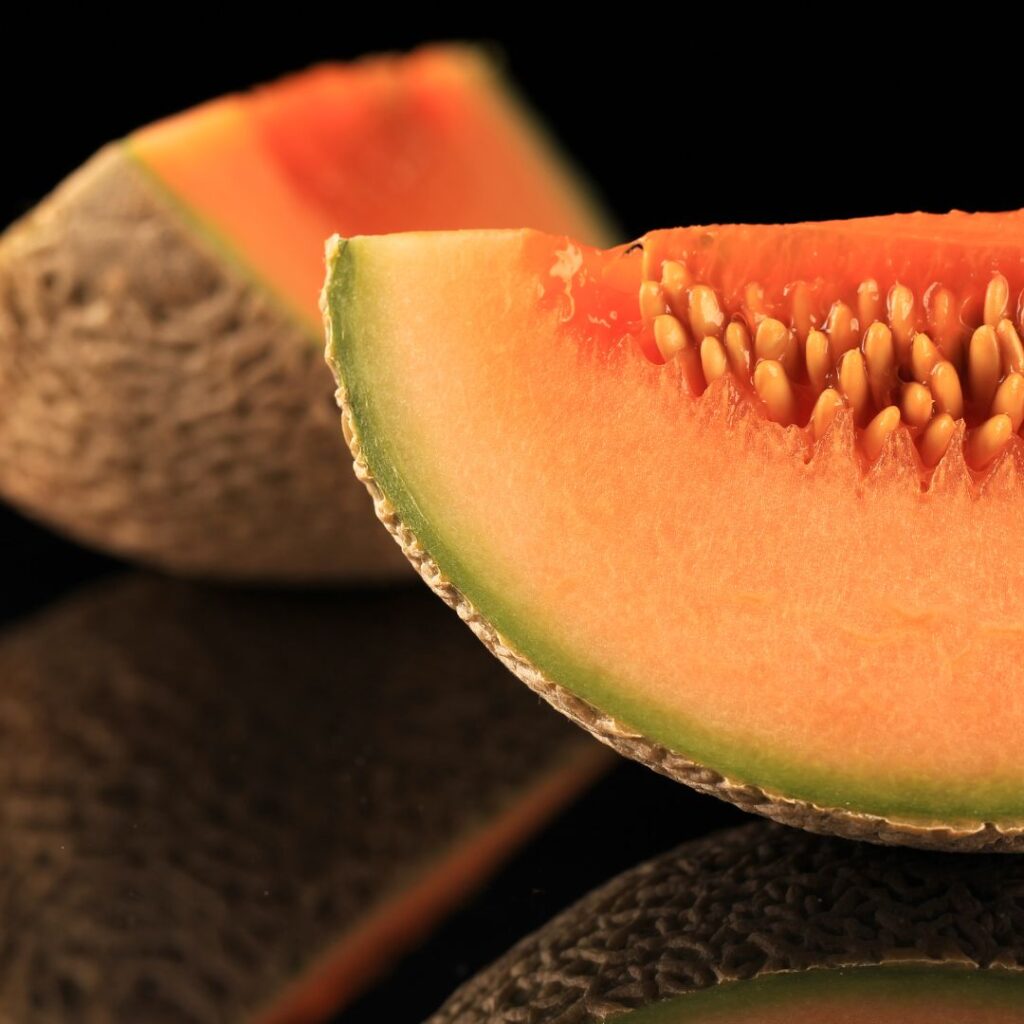
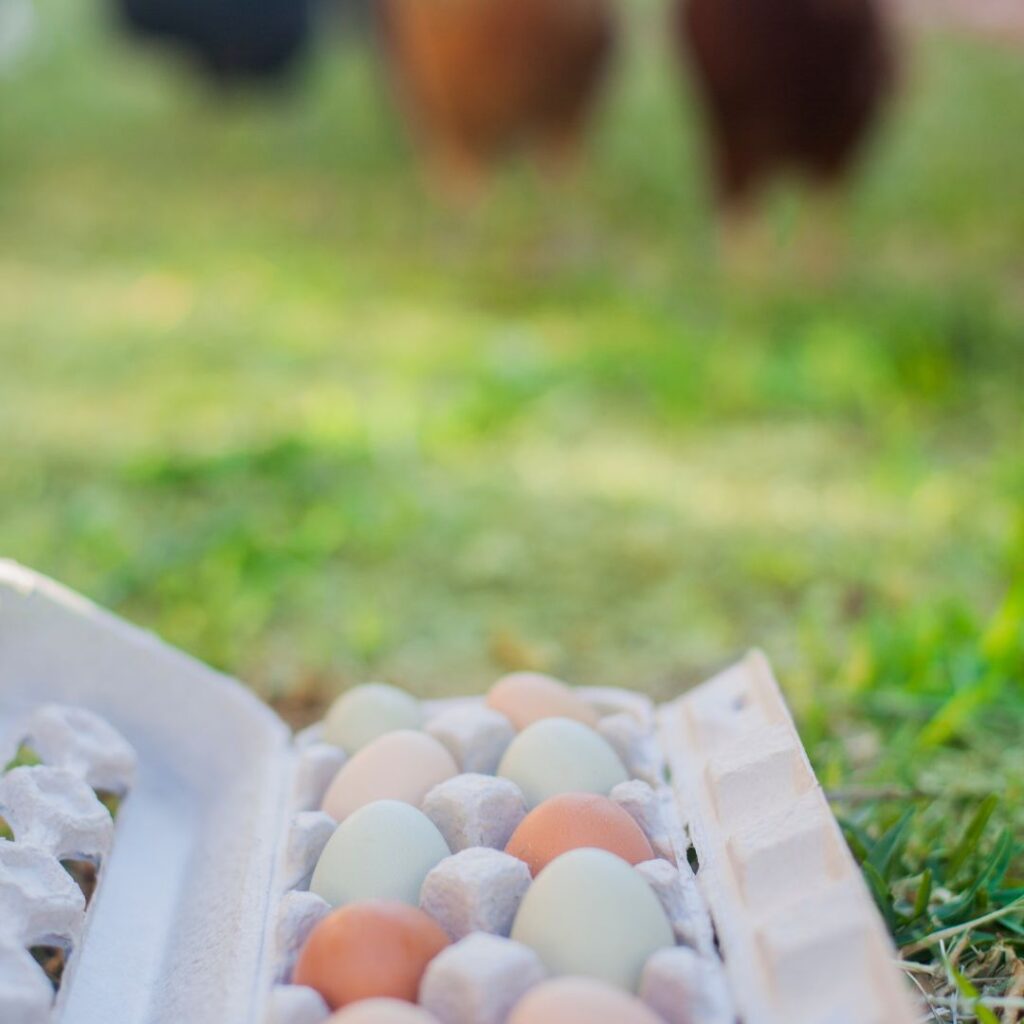
Pingback: 15+ Best Heat Tolerant Chicken Breeds & 5 Worst Breeds for Hot Climates